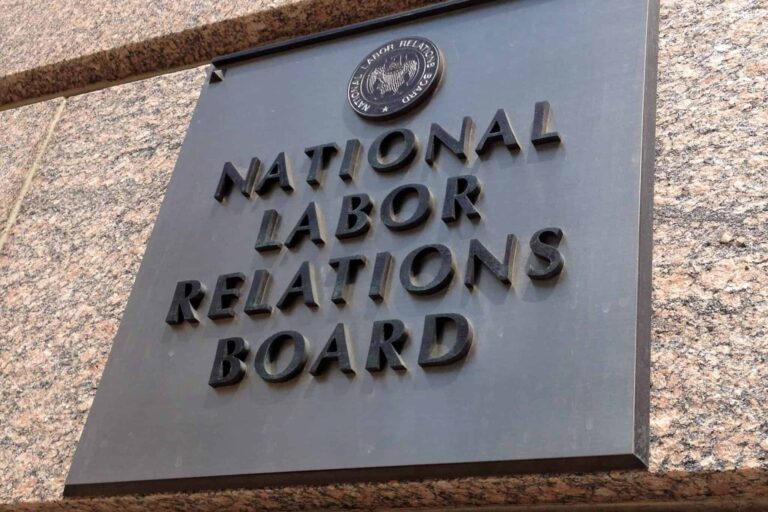
Tascha Shahriari-Parsa is a student at Harvard Law School.
For decades, the Board has only issued bargaining orders in three instances. The first is where the union has been certified through a Board election. The second is where the employer has voluntarily recognized the union. And the third, the rare “Gissel” bargaining order, is where an employer’s coercive conduct has made the guarantee of a free election impossible.
This changed with the Board’s decision yesterday in Cemex Construction Materials Pacific, LLC. The Board will now also issue bargaining orders in two more situations. First, if a majority of employees have designated the union as their representative (such as through signed authorization cards) but the employer has refused the union’s request for recognition, the Board will issue a bargaining order unless the employer has filed a timely petition for a Board election. Second, even if the employer files an election petition, the Board will issue a bargaining order if the employer commits meaningful unfair labor practices (ULPs) during the lead up to the election.
General Counsel Jennifer Abruzzo had asked the Board to return to the old standard of Joy Silk, which required employers to “bargain upon request with a union that had majority support” unless the employer could demonstrate a “good-faith doubt as to the union’s majority status.” The decision moves Board law in that direction. But it is no Joy Silk.
What happened in Cemex
A majority of Cemex’s ready-mix drivers signed authorization cards designating the Teamsters as their union representative. The Teamsters then petitioned for a Board election.
Meanwhile, Cemex’s frontline supervisors and managers “engaged in more than 20 distinct instances of objectionable or unlawful misconduct.” For example, they fired a driver for her union activity, and they threatened that unionization could lead to job losses, wage freezes, and reduced benefits. So, when the election arrived, the Teamsters lost, although by a razor-thin margin: 179 to 166.
Given Cemex’s ULPs, the ALJ set aside the election, which the Board affirmed. But the Board also did something the ALJ wasn’t willing to do: order Cemex to bargain with the union.
The ALJ had refused to issue a Gissel order after finding that most employees were probably not aware of—and therefore, not affected by—the employer’s ULPs. But the Board noted that Cemex’s “most severely coercive misconduct was disseminated to a number of employees far greater than the seven whose changed votes would have sufficed to reverse the outcome of the election.” Thus, the Board’s traditional remedies were likely not enough to “eras[e] the effects of [Cemex]’s highly coercive misconduct and ensur[e] a fair rerun election,” and a Gissel order was warranted.
That could have been it. But the Board took Cemex as an opportunity to reevaluate its remedial bargaining framework more broadly.
The evolution of the remedial bargaining order
Section 9(a) of the NLRA states that “[r]epresentatives designated or selected for the purposes of collective bargaining by the majority of employees” in an appropriate unit are to be their “exclusive representatives.” It does not prescribe a specific procedure, such as elections, for such “designat[ion] or select[ion].” And section 8(a)(5) establishes a duty for employers to bargain with “the representatives of his employees, subject to the provisions of section 9(a).”
As the Supreme Court has noted, “it was early recognized that” these provisions together triggered an employer’s “duty to bargain whenever the union representative presented ‘convincing evidence of majority support.’” Thus, under the Board’s 1949 decision in Joy Silk, an employer presented with such evidence could not refuse to bargain unless it had a good-faith doubt about the union’s majority status. If the employer committed ULPs, the Board presumed that the employer refused to bargain not because of such a doubt, but out of a desire to illicitly impede the union’s efforts.
Later cases limited Joy Silk almost exclusively to cases where the employer committed ULPs. In 1969, in oral arguments before the Supreme Court in NLRB v. Gissel Packing, the Board claimed to have “virtually abandon[ed] the Joy Silk doctrine altogether.” An employer’s subjective motivations had been excised from the inquiry and “an employer can insist that a union go to an election…so long as he is not guilty of misconduct.” The Board codified this position two years later in Linden Lumber, where the Board also concluded that employers have no duty to file for elections if they doubt the union’s majority status.
Additionally, the Supreme Court in Gissel “approve[d] the Board’s use of the bargaining order in less extraordinary cases marked by less pervasive” ULPs “where there is also a showing that at one point the union had a majority.” But in recent decades, the Board has effectively limited issuance of remedial bargaining orders to “’exceptional’ cases marked by ‘outrageous’ and ‘pervasive’” ULPs.
In sum, for decades, the Board’s standard has effectively been that “an employer can insist that a union go to an election” even if the employer is “guilty of misconduct.” That is, until yesterday.
The new standard
Under Cemex, “an employer violates Section 8(a)(5) and (1) by refusing to recognize, upon request, a union that has been designated as Section 9(a) representative by the majority of employees in an appropriate unit unless the employer promptly files [an election petition] to test the union’s majority status or the appropriateness of the unit.” “Promptly” means within two weeks, absent extenuating circumstances.
Thus, after presenting proof of a card majority to an employer, unions can request that the employer begin bargaining. If the employer refuses for a few weeks (without filing for an election), the union can file a ULP charge with the Board, and the Board will order the employer to bargain.
Meanwhile, employers can avoid a refusal-to-bargain order by petitioning the Board to hold an election. But crucially, if the employer then commits ULPs of a nature “that require[] setting aside the election,” the Board will dismiss the petition and issue a bargaining order.
Cemex is not Joy Silk. It narrowly overrules Linden Lumber’s holding that the onus is on the union to petition for an election. But Cemex is otherwise aligned with Linden Lumber’s “conclusion that [an employer] should not be guilty of a violation of 8(a)(5) solely” because “of its refusal to accept evidence of majority status other than the results of a Board election.” Thus, unlike Joy Silk, Cemex gives employers the right to insist on an election even when they have no reason to doubt the union majority.
Cemex is better understood as a more refined version of the standard that the Board claimed in oral arguments in Gissel: that “an employer can insist [through a promptly filed petition] that a union go to an election…so long as he is not guilty of misconduct [that would require setting aside an election].” It’s a compromise. It also fails to remedy situations where employers commit serious ULPs early on in union campaigns, thereby unlawfully preventing unions from ever gaining majorities in the first place.
But by guaranteeing a bargaining order as a remedy for typical ULPs in the lead up to an election where the union once possessed a card majority, Cemex will, as Ben noted yesterday, significantly dissuade flagrant transgressions of our labor laws—possibly more than any Board decision of the last half-century.










Daily News & Commentary
Start your day with our roundup of the latest labor developments. See all
April 26
Starbucks and Workers United resume bargaining talks; Amazon is ordered to disclose records; Alabamians support UAW’s unionization efforts.
April 25
FTC bans noncompete agreements; DOL increases overtime pay eligibility; and Labor Caucus urges JetBlue remain neutral to unionization efforts.
April 24
Workers in Montreal organize the first Amazon warehouse union in Canada and Fordham Graduate Student Workers reach a tentative agreement with the university.
April 23
Supreme Court hears cases about 10(j) injunctions and forced arbitration; workers increasingly strike before earning first union contract
April 22
DOL and EEOC beat the buzzer; Striking journalists get big NLRB news
April 21
Historic unionization at Volkswagen's Chattanooga plant; DOL cracks down on child labor; NY passes tax credit for journalists' salaries.